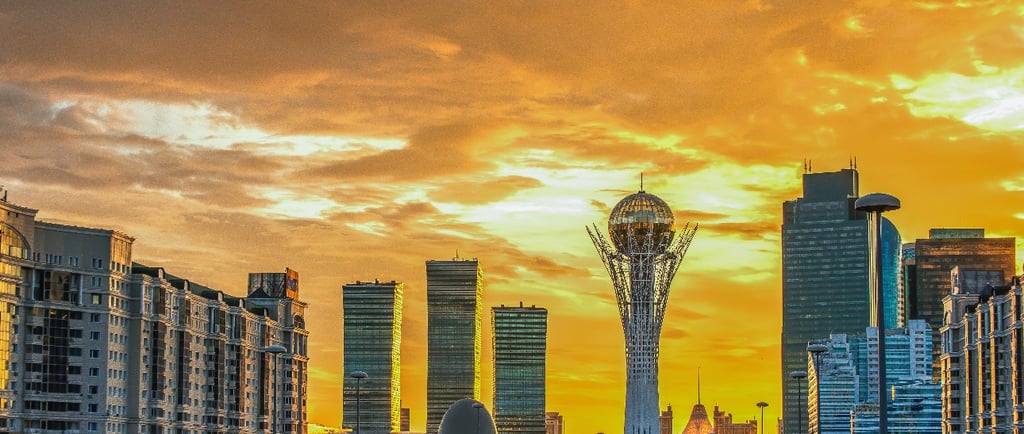Kyrgyzstan: How Great Powers Are Quietly Rewriting the Rules in Central Asia
In Central Asia, a transformation of the region into a nexus of global interest is underway. As numerous nations engage through summits, infrastructure, and resource deals, is this multipolar diplomacy, or a quiet recolonization of the region’s future?
KYRGYZSTANTURKMENISTAN
Raymond Puentes
6/25/20256 min read


Central Asia has experienced a notable increase in strategic importance over the past two years. As global supply chains undergo fragmentation, trade corridors are being reconfigured, and the geopolitical center of gravity is shifting eastward. The five republics of Kazakhstan, Uzbekistan, Kyrgyzstan, Tajikistan, and Turkmenistan have assumed a more prominent role in the global narrative. Previously characterized as a "post-Soviet periphery," these nations currently host an expanding array of strategic engagements, including intensified high-level summits, infrastructure initiatives, academic exchanges, and military cooperation missions. The C5+1 formats, involving the United States, China, Russia, the European Union, India, and Turkey, have emerged as standard mechanisms for bilateral diplomacy, thereby enabling Central Asia to acquire greater leverage as a collective entity. The region is no longer merely a recipient of external actions; it is actively shaping its own trajectory.
The initiation of the China-Kyrgyzstan-Uzbekistan (CKU) railway project in Jalal-Abad, Kyrgyzstan, signifies a pivotal geopolitical development. After extensive negotiations, China has commenced construction on this $8 billion railway, which establishes a direct westward route connecting China to the core of Central Asia, thereby circumventing traditional Russian infrastructure. Concurrently, Kazakhstan is undertaking significant modernization of its own infrastructure. In collaboration with European and Turkish partners, Kazakhstan is intensifying its focus on the Trans-Caspian International Transport Route (TITR), also known as the Middle Corridor. In early 2025, Kazakhstan inaugurated its first high-speed freight line from Almaty to the Georgian port of Poti, designed to reduce cargo transit times to fewer than 12 days. Furthermore, the European Union's €10 billion Global Gateway initiative is injecting momentum into the region's connectivity endeavors. The establishment of the Trans-Caspian Corridor Coordination Platform, announced in Turkmenistan in October 2024, represents Europe's clearest effort to counterbalance Chinese-led Belt and Road dominance and present Central Asia with an alternative development path.
The proliferation of parallel infrastructure projects indicates a competitive environment rather than a chaotic one. Each new route establishes a degree of autonomy and influences the setting of regulations at subsequent junctures. Uzbekistan has formalized separate transport Memoranda of Understanding with both Iran and Pakistan, seeking access to the Arabian Sea and South Asian markets. Companies such as DHL, Maersk, and DP World have expanded operations in Almaty, and pilot projects have tested containerized rail freight from Xi'an to Istanbul via Caspian crossings.
Beyond transportation infrastructure, the nature of resources transported through these networks holds substantial importance. Turkmenistan's reliance on China for gas has been solidified through three operational pipelines, with a fourth, Line D, currently under joint feasibility study. Although technically complex and subject to years of delay, this route is again under consideration by Beijing, with promises of a 30 billion cubic meters per year capacity. Kazakhstan has become Europe's second-largest uranium supplier, surpassing Niger following recent instability in the Sahel region. In 2024, a series of high-level visits from European Commission officials resulted in new long-term procurement agreements. The European Union is also investing in battery-grade mineral mapping in southern Kazakhstan and Kyrgyzstan. The pursuit of lithium, molybdenum, and rare earth elements has quietly accelerated. China currently holds a dominant position in several mining operations through joint ventures with local state-owned enterprises. Nevertheless, United States-backed companies have expressed renewed interest through the Development Finance Corporation (DFC), particularly after tariffs implemented by the Trump administration made Chinese-origin minerals less appealing.
China retains a decisive advantage in metallurgy, controlling upstream and midstream nodes from refinery technology to logistics. The challenge for Central Asia involves its capacity to ascend the value chain or remain a supplier of raw materials to external industrial complexes. Concurrently, regional cooperation on water-energy interdependencies has reemerged. Kyrgyzstan and Tajikistan, as upper riparian states, have resumed discussions on coordinated dam operations with Uzbekistan to achieve a balance between water usage and hydroelectric output. Given that climate variability poses long-term threats, this intraregional diplomacy may prove as strategic as any bilateral pipeline agreement.
Following the conflict in Ukraine, Russia's influence in Central Asia is no longer unequivocally assumed. While Russia maintains hard assets such as military bases, linguistic dominance, and significant soft infrastructure, its role as a security hegemon has diminished. China, while refraining from hard deployments, has concentrated on digital and surveillance infrastructure. Its companies have constructed facial recognition systems for border checkpoints and customs systems for remote trade posts. In Tajikistan, satellite imagery in 2024 revealed expanded Chinese-built patrol stations, raising concerns in Moscow. Turkey has capitalized on military-to-military ties. Its sale of Bayraktar TB2 drones to Kyrgyzstan and Turkmenistan, along with associated training, represents not only arms sales but also trust-building. Turkish military academies hosted numerous Central Asian officers for advanced training programs between 2023 and 2025. The United States has reengaged discreetly through advisory programs and border security collaboration. Washington's low-profile approach, which includes training anti-smuggling units and funding joint counternarcotics initiatives, has proven more sustainable than a direct military presence.
The outcome is a hybrid security landscape comprising Russian bases, Chinese surveillance, Turkish training, and Western funding, with each actor establishing narrow but significant areas of influence. Notably, local actors are not simply acquiescing to these arrangements; they are actively shaping them. Uzbekistan's National Defense Concept, updated in 2024, commits to a "non-bloc security policy" while increasing interoperability exercises with both NATO and Shanghai Cooperation Organization members. Kazakhstan's recent military reforms encompass recruitment modernization and civil-defense drills based on NATO templates, all while maintaining defense ties with Moscow.
In the domain of influence, language holds significant sway. Russian remains dominant in formal education and public life across Kazakhstan and Kyrgyzstan. However, national language policies, such as Kazakhstan's planned full transition to the Latin script by 2031, signal a gradual divergence. China has counteracted this shift by expanding Confucius Institutes and offering scholarships; in 2024 alone, over 600 full-ride placements were granted to Central Asian STEM students. Concurrently, Turkey's emphasis on shared Turkic identity resonates deeply in Uzbekistan and Kyrgyzstan, particularly within rural and religiously conservative communities. A 2024 Eurasia Group survey found that among 18-25-year-olds in urban areas, over 40% viewed Turkey as a “friendly, relatable power,” while only 28% chose Russia. China ranked lowest in emotional trust but highest in "economic opportunity." This nuanced soft power dynamic is shaping how future generations perceive partnerships, not through ideological alignment but through cultural affinity and career pathways. Public diplomacy efforts are increasingly strategic. The United States State Department’s TechWomen and Fulbright programs are now targeting second-tier cities, and the European Union has expanded Erasmus+ outreach to regional universities in Karakalpakstan and Osh.
Rather than succumbing to dependency, Central Asian states are increasingly coordinating internally to negotiate from a position of strength. In 2024, the presidents of the five republics convened four times in Tashkent, Dushanbe, New York, and Baku, signing joint statements on digital connectivity, climate security, and border management. Kazakhstan and Uzbekistan are spearheading a regional green corridor program, standardizing customs procedures and digital signatures to reduce transaction costs across rail freight. Kyrgyzstan, Tajikistan, and Uzbekistan have resumed hydropower cooperation discussions suspended since 2015. Tajikistan’s Rogun Dam Phase II recommenced construction in mid-2024, supported by funding from the Islamic Development Bank. Turkmenistan maintains formal neutrality but has joined several multilateral energy dialogues and permitted European Union observers to attend the Ashgabat Energy Charter Forum in November 2024. This trend reflects a quiet regional awakening: a transition from transactional foreign policy toward rule-setting coalitions.
Following the 2025 United States tariff regime, Central Asia has experienced an increase in inquiries from Western multinational corporations seeking "China plus one" alternatives. According to the Crossroads Central Asia report, over 12 mid-sized German and Korean manufacturers have explored industrial zones in Shymkent and Tashkent. The governments of Uzbekistan and Kazakhstan have established special economic zones (SEZs) offering expedited permits and tax exemptions to attract supply chain relocations. Tajikistan signed an agreement with an Indian textile conglomerate to construct a cotton-to-fabric processing complex aimed at reexporting to European markets. Global logistics companies, including Maersk and DP World, have expanded offices in Almaty and Baku. DHL initiated trial runs of a rail-air combined freight route in December 2024, with the objective of bypassing bottlenecks in East Asia and Russia. These developments suggest that tariffs can generate opportunities, but only for agile actors possessing reliable legal and logistical systems.
The current pursuit of influence is no longer primarily about domination but rather about defining the nature of engagement in a volatile global environment. Central Asian governments are leveraging overlapping interests among major powers to avoid binary choices. However, the path ahead presents challenges. Should corridor competition become coercive through debt leverage, digital overreach, or security escalations, regional unity could fracture. Conversely, if Central Asia succeeds in codifying its multi-vector foreign policy into established norms and institutions, it may serve as a model for resilient multipolar sovereignty in the 21st century. The determination of rules, and the entities that establish them, remains in flux. However, the region is no longer passively awaiting external definition; it is actively formulating its own strategic framework.


